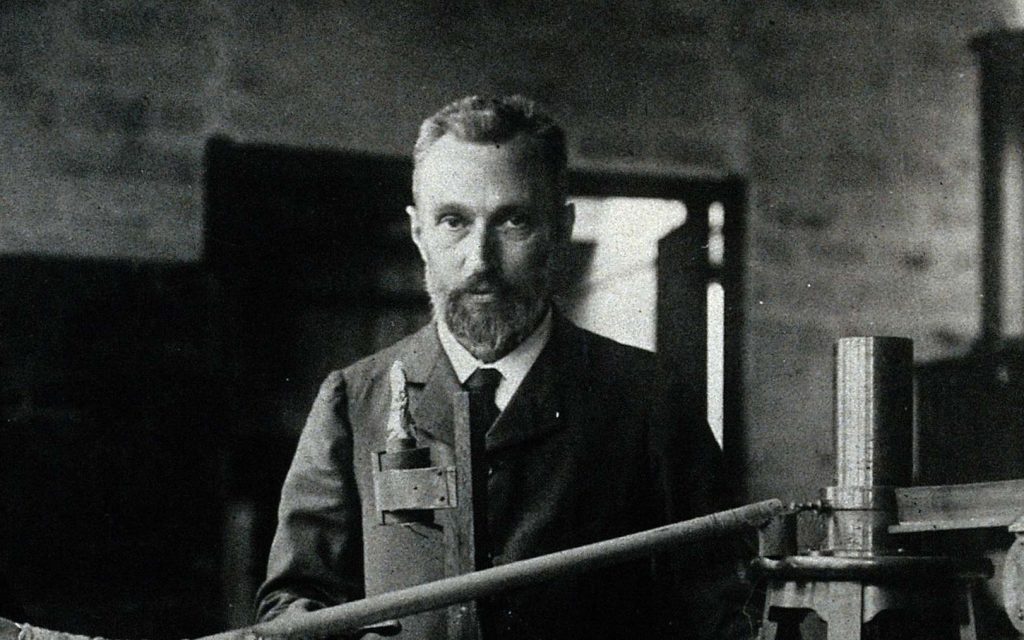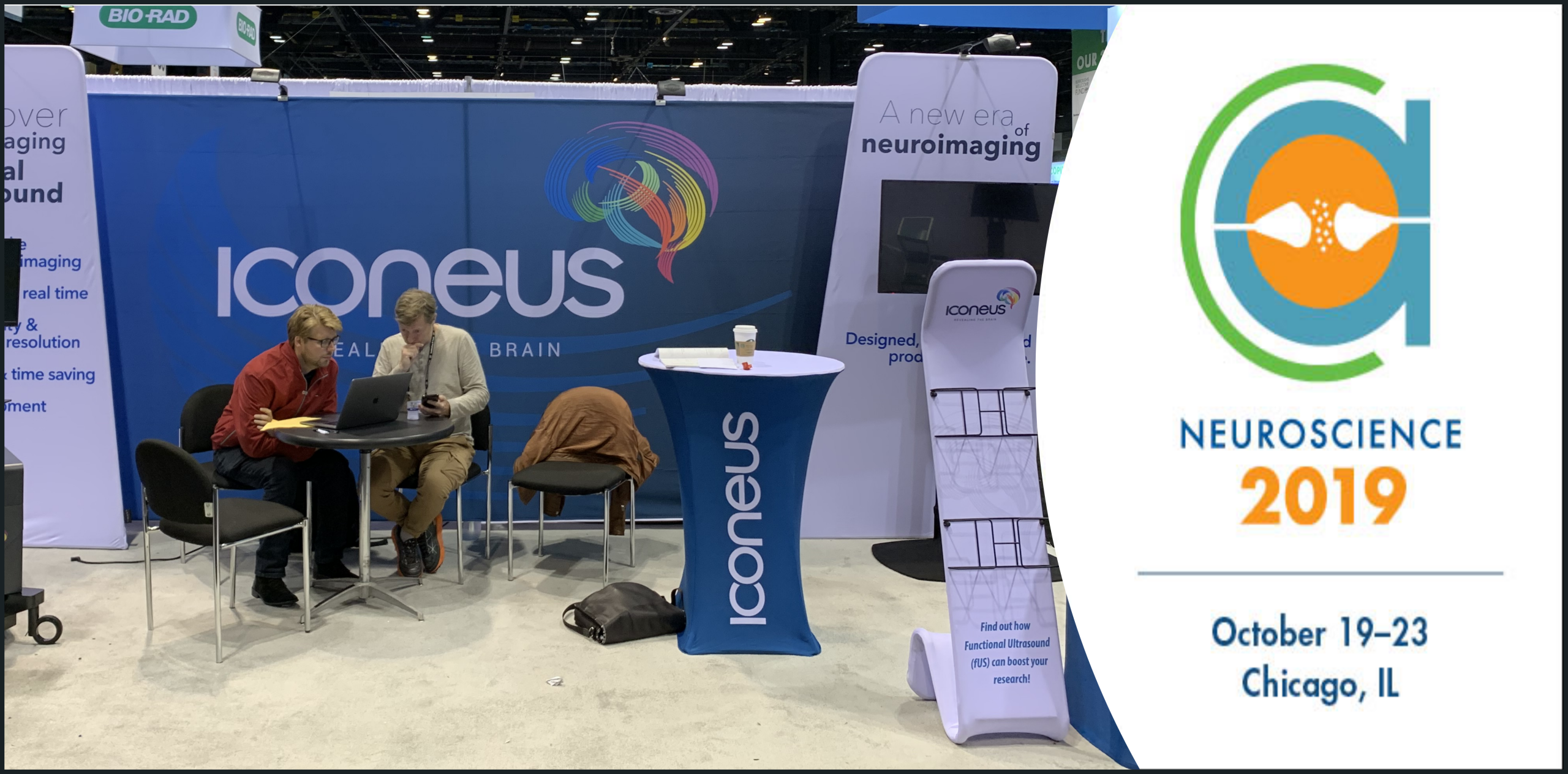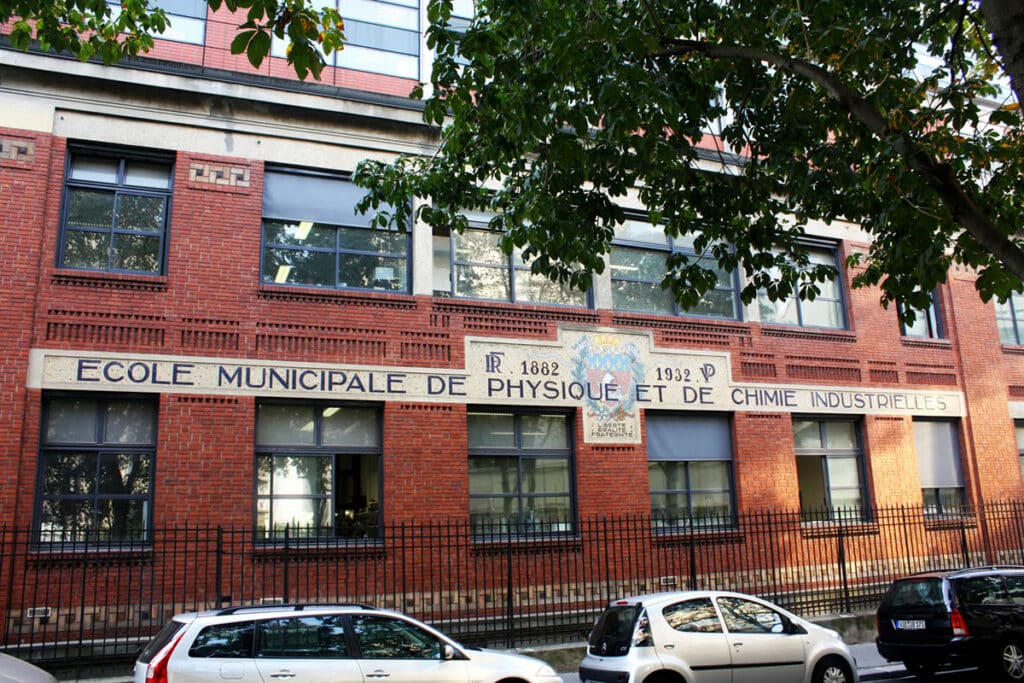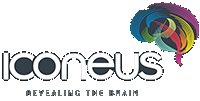Our story
We’re Iconeus – a Paris-based company helping researchers to gain new insights into neuroscience using our groundbreaking functional ultrasound technology. Read on to find out about our story: how we got started, and the progress we’ve made in transforming fUS from theory to reality.

Iconeus: Our academic beginnings
Looking back on the origins of Iconeus, it’s amazing how quickly it all happened. In 2011, a team led by Professor Mickael Tanter, at ESPCI Paris, published a paper introducing functional ultrasound (Macé et al., Nature Methods, 2011). In it, they proposed that very high framerates would radically improve Doppler imaging sensitivity, enabling measurement of blood volumes in smaller vessels than previously possible.
Taking benefit of this 50-fold increase in sensitivity, they also demonstrated that such ‘ultrafast ultrasound’ can exploit the neurovascular coupling. This allowed them to carry out functional imaging of brain activity, with the first stunning movies acquired using fUS imaging being obtained in rodents.
In subsequent years, Tanter’s team released a succession of papers, written in collaboration with several neuroscience teams. In particular, with Dr. Zsolt Lenkei and Dr. Bruno Osmanski, also at ESPCI Paris, they demonstrated the capacity of fUS to image functional connectivity in rat brains in a minimally invasive way (for example, see Osmanski et al., Nature Communications, 2014).
Together with their colleagues Dr. Mathieu Pernot and Dr. Thomas Deffieux, international experts in biomedical ultrasound, Tanter and Lenkei realized the enormous potential of fUS imaging for neuroscience, so in 2016 they founded Iconeus, with the aim of making the technology commercially available to a global audience.

Mickael Tanter, Ph.D.

Zsolt Lenkei, M.D., Ph.D.

Mathieu Pernot, Ph.D.

Thomas Deffieux, Ph.D.

Ludovic Lecointre, Pharm.D.

Bruno Osmanski, Ph.D.
Refining and field-testing fUS imaging
All this has provided the resources to take functional ultrasound from the physics bench to being ready for the marketplace, by making the software easy to use, improving the instrument design, obtaining the necessary certifications, and by helping over 10 collaborators to field-test prototypes of Iconeus One in their labs as part of our ‘early adopter’ program (and publish their results, too).
All this effort has borne fruit, and in October 2019 we were thrilled to formally launch Iconeus One at the annual meeting of the Society for Neuroscience in Chicago – a great day for all of us!


Part of a distinguished history of innovation
Remarkably, functional ultrasound is not the first advance in ultrasound to be pioneered at ESPCI Paris, because it was here in 1881 that Pierre Curie first demonstrated the reverse piezoelectric effect, which is the foundation of all modern ultrasound technologies.
As well as being the home of Pierre and Marie Curie (who shared the Nobel Prize in 1903 for their work on radioactivity), ESPCI Paris has seen many other discoveries that feature in our lives today, including the neon tube, black box flight recorder, quartz watch, wireless technology, and self-healing rubber. It’s a long tradition, and one that we’re proud to continue!
Looking to the future: Helping you benefit from fUS
Today, we’re as committed as ever to helping neuroscientists uncover new insights into brain function and diseases using the remarkable capabilities of functional ultrasound. Even in the short time since the technology became available, researchers have shed light on everything from basic brain functions to neuropsychiatric pathologies and possible treatments.
The future promises more excitement too – including the prospect of 4D functional ultrasound!
Perhaps your lab could benefit from functional ultrasound? We’d be delighted to hear about your needs, and talk about how we might be able to help.
Iconeus is supported by:





